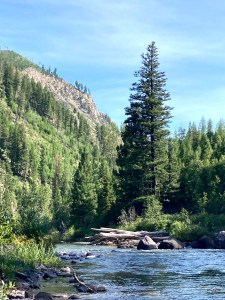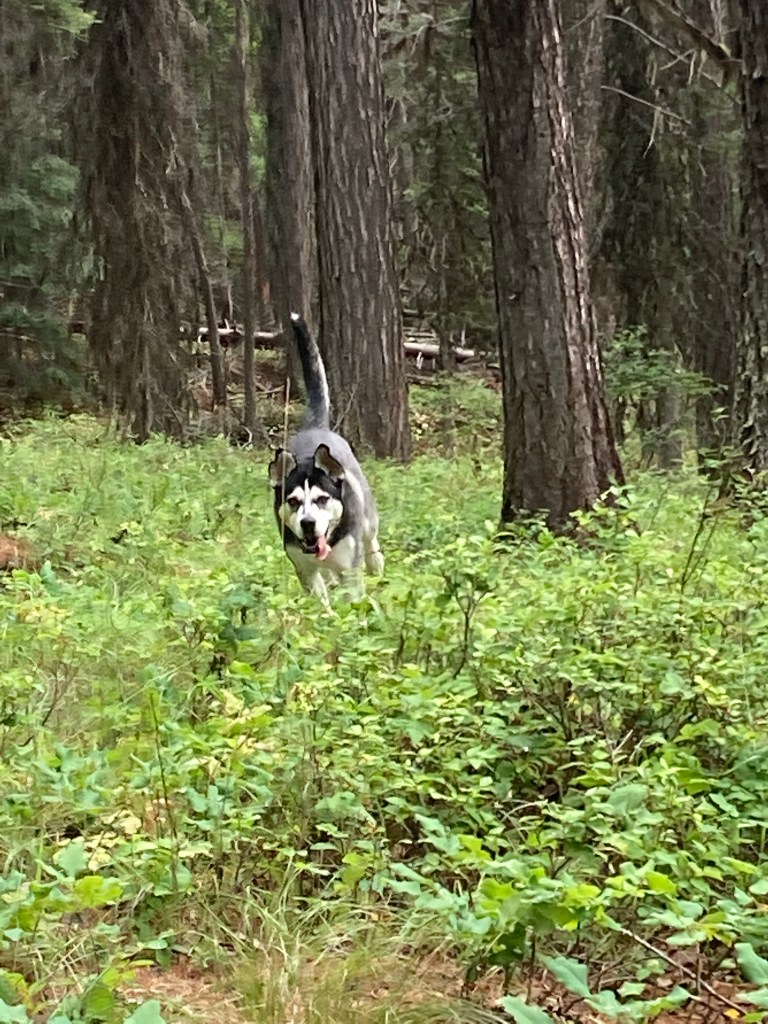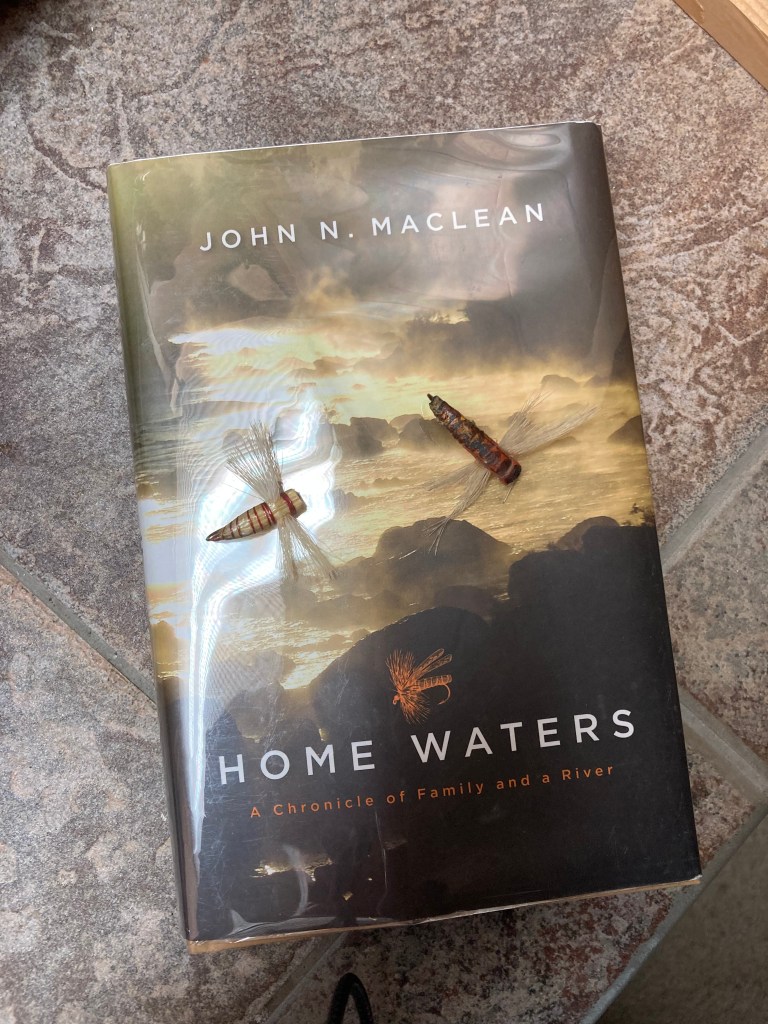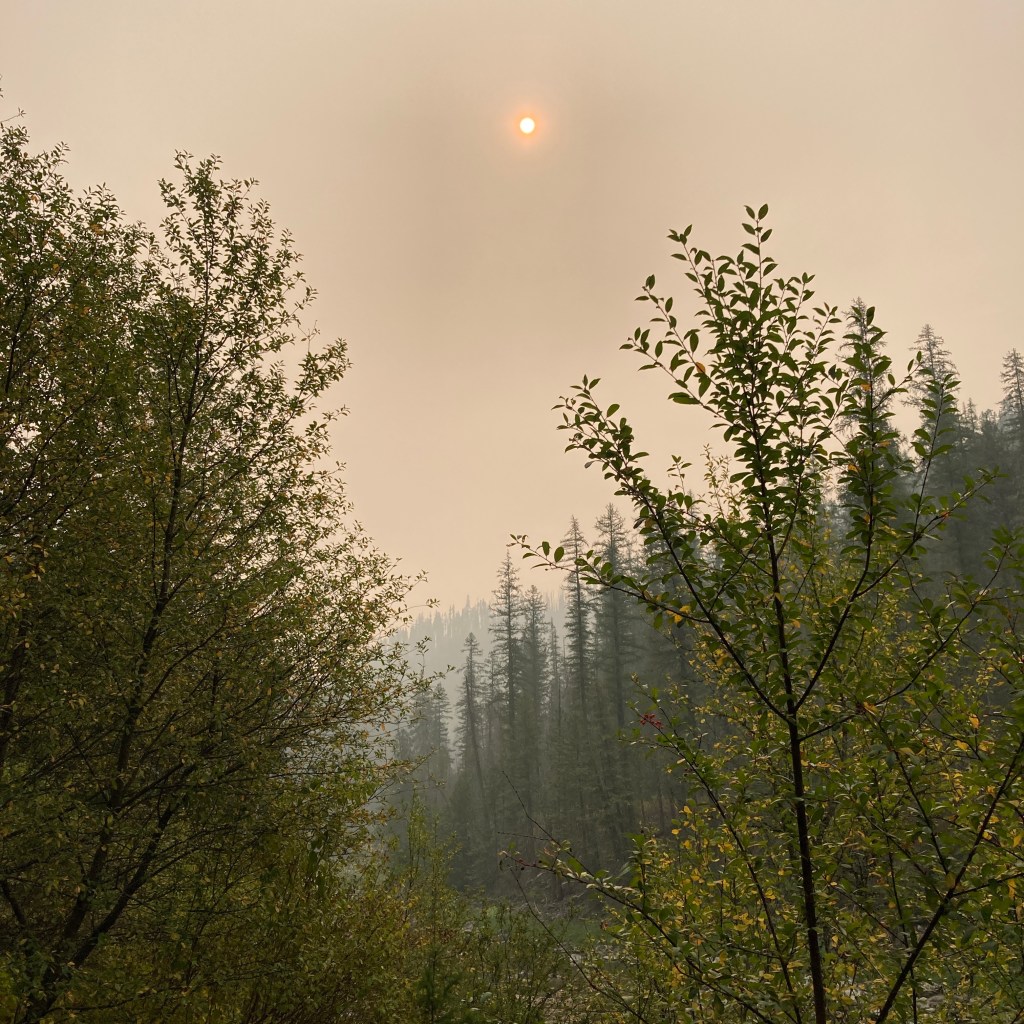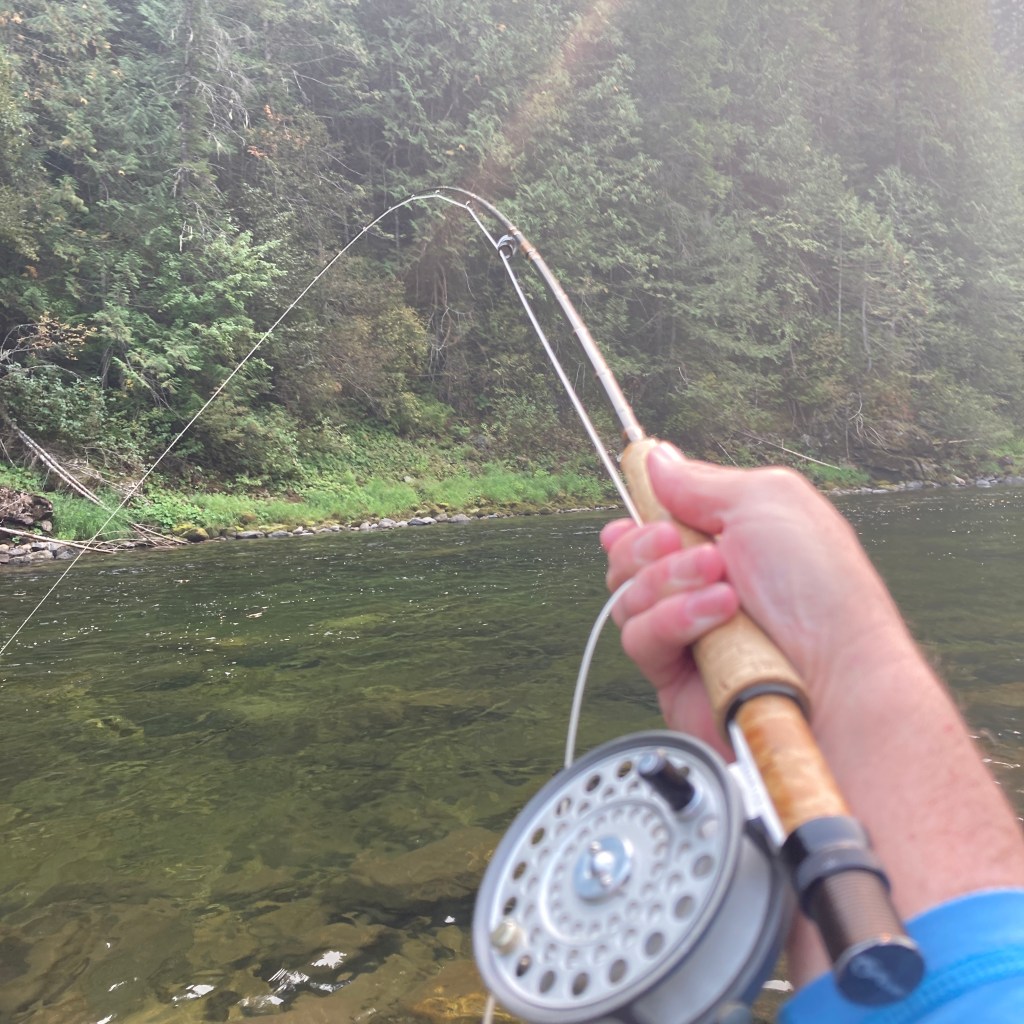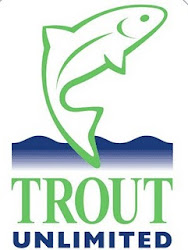
Archive for the ‘The Environment’ Category
Evening at the Cabin
September 26, 2023Doug Peacock addresses Anthropocentrism, in Was it Worth It?
July 28, 2022
Grizzly Bear advocate Doug Peacock has released a new memoir, in the form of a collection of essays. It is entitled Was it Worth It? A Wilderness Warrior’s Long Trail Home and published by Patagonia. For those unfamiliar with Peacock, he served as a US Army Special Forces medic during the Vietnam War. Partly as a means of recovering from his combat experience, he immersed himself in wild places, particularly in places such as Yellowstone and Glacier National Parks. There, he observed and filmed grizzlies, eventually becoming a genuine authority on their numbers and behavior. He wrote several books along the way, most famously Grizzly Years: In Search of American Wilderness (1990). Eventually, he emerged as a well-known environmental activist and author, seeking to protect not only grizzlies and their remaining natural habitats, but many other animals and ecosystems as well. He even served as the inspiration for his friend Edward Abbey‘s fictional character George Washington Hayduke. Abbey included this character in his influential 1975 Monkey Wrench gang novel, about four radical environmental activists, and in its sequel Hayduke Lives! (1989).
As I have noted elsewhere, Peacock is also a fly fisherman. He addresses the topic in several of essays included in his new book. What I like best about the book, however, are Peacock’s views on wilderness, and the relationship between human and other-than-human beings. A good example is found in the chapter “Headwaters,” about an extended float trip in Montana.
The close encounter with the nonvenomous snake brought me a heightened awareness of the beauty all around me. It was good to have dangerous wild neighbors. Living among grizzly bears had made a similar impression on me. Sharing the habitat with animals that sometimes kill or eat humans was the most direct route I knew toward a non-anthropocentric cosmology. How the hell could anyone believe humans were the center of the world when facing venomous reptiles, grizzlies, tigers, lions, jaguars, or polar bears [many of these creatures appear in the book] on equal terms and neutral turf?
Peacock, Was it Worth It?, 149
I’ve explained before that several generations of my family were inholders in Glacier National Park, and my sisters and I share a cabin on the edge of Montana’s Scapegoat Wilderness, part of the larger Bob Marshal Wilderness Complex. Both areas are inhabited by grizzly bears and wolves. Indeed, there are 13 wolf-packs in the drainage where our cabin is located. So, I spend a lot of my time thinking about these creatures and my relationship to them.
Grizzly bears and wolves are key parts of the the ecosystems to which they are native. If they disappear altogether, those ecosystems change fundamentally. Those ecosystems are no longer the “Glacier Park” or “The Bob” that we love. For a variety of reasons, many people would like to see the numbers of these animals greatly reduced, even to extinction. Where I currently reside, it is not uncommon to see trucks adorned with decals that say “smoke a pack a day,” the double meaning of which is to slaughter a wolf pack (the decal usually depicts the silhouette of a wolf pack in cross hairs). This is just one example of how violent and even hateful the attitudes toward native apex predators can be. Like Peacock, I simply don’t understand how the sort of people sporting these decals can see the grizzlies and wolves as beings with lesser significance than humans, beings for which we need show no consideration. Of course, I do understand concerns about predation upon livestock and pets, but such incidents can be reduced through means other than annihilation (and those means might certainly include responsible hunting). Most important, we need to protect the predators’ natural habitats and food sources, so that they are less compelled to roam.
A friend and I often discuss how so many of the “outdoorsmen” and “outdoorswomen” we see in the mountains around here are insulated from the other-than-human world around them. They spend much of their days on noisy ATVs, which kick up so much dust it must be hard to even see the edge of the dirt road, let alone the forest beyond it. At night, they climb into their trailers, close the doors, and behave just exactly as they would back in the city. When they do see bears, wolves, and so on, it is often in the context of a hunt, which all-to-often is driven by ego (mind you, I am all for responsible subsistence hunting). So, obviously, they are not likely to achieve the “heightened awareness of the beauty” around them, that Peacock does in the passage above.
Would their anthropocentric attitudes change if they broke through the physical and mental barriers that insolate them from other-than-human beings as Peacock believes? I suspect so. Regardless, I appreciate that Peacock offers us a book that provokes such questions. I appreciate too, that he has spent so much of his life genuinely trying the change the anthropocentric views of humans, who see the beings around them as something lesser, something bothersome, and something unnecessary.
Was it worth It? is an engaging read. The essays touch upon a variety of experiences in Peacock’s interesting life. This means there is probably something in the book that will resonate with every reader. That said, the copy-editing by Patagonia could be better. Overall, however, I recommend the book.
Cycles
September 26, 2021During my birthday this year, I was able to fish my home water. I had enough time alone to get to my favorite hole, which requires some hiking and stream crossings. Needless to say, this hole is my favorite because I have made some of my most memorable catches there. Sure enough, I caught a huge cutthroat there once again during this recent visit. It occurred to me that I have now been fishing this spot for decades. Such a realization is sobering, for a guy who feels relatively young, but it also brings a sense of gratitude and pride.
Back at the cabin, over the ridge, I had been reading the new book Home Waters: A Chronicle of Family and a River by John N. Maclean. The author, while very accomplished in his own right, is the son of Norman Maclean. Norman, of course, wrote A River Runs Through It. I have previously mentioned that my cabin is in the Big Blackfoot River drainage, that my father was a Presbyterian minister, and that my family is rooted in Missoula and Helena. Readers of A River will therefore understand why the book resonates with me. As John Maclean’s new book focuses upon his family and his time in this same area, it resonates with me as well. Home Waters is well-written and the younger Maclean paints an accurate and familiar picture of Western Montana. In the text, he reflects upon his father, his uncle Paul, their relationship, and his own place in the Maclean family.
As I often do, I also found myself reflecting upon my father, my uncle–both very troubled in their own ways, and the rest of my family after I set the book down and went fishing. It’s easy to focus upon the negative aspects of family history or less-than-pleasant events in my own life. But, as indicated earlier, I simply felt gratitude during this outing–gratitude that my father, despite his faults and failures, introduced this place to me, my mom, my sisters and, by extension, our spouses and children. We often hear about how many phenomena in families are cyclical. In such discussions, we tend to focus on negative phenomena. But the good stuff can by cyclical too. Like the return to a favorite spot.
Admittedly, the quality of this return depends upon the health of the stream, which has seen growing fishing pressure during the years I have fished it, but we’ll deal with that topic another time.
Loons
June 8, 2021The other morning, I woke up early at our cabin to let one of the dogs out. Besides the dog, a pair of loons were awake and calling to one another. Later, during the day, I enjoyed seeing them diving for fish on the lake.
Loons often remind me of my uncle, Maury. He was an unusually kind man but also a troubled one, who struggled with mental health challenges and the lasting impact of profound child abuse. Its a little difficult to know just what his youth was like. My father has not been very helpful in piecing things together, either, as he seems to have coped with the childhood threat of violence by becoming a pathological liar. Regardless, my uncle passed away years ago, and my father already difficult relationship with the truth is complicated by dementia.
Happily, my uncle married a woman who stuck with him through thick and thin. She gave many of my uncle’s possessions to me when he passed. Among these was a painted ceramic loon. When I first received it, I turned the loon over and found a note for my aunt inside. Clearly, my uncle had given the loon to his wife as a gift. The note reads, “To Ruby, with love from a guy that is kind of Looney sometimes — Maury.” The words are both sweet and sort of sad.
My aunt also gave to me, as well as to my father, my uncle’s writings. These offer a bit more insight into his life, as the bulk of these comprise an unpublished poetic autobiography. Many of the poems pertaining to his youth are set at Lake MacDonald, in Glacier National Park. He and my father partly grew up there at a family property. No doubt, both of them saw plenty of loons on the lake in front of the property. I’ve seen many loons there myself.
In his poems, my uncle describes his times at Lake MacDonald as pleasant–as times when he could escape some his parents’ abuse, perhaps enjoying the protection of his grandmother and other relatives. I’m sure, then, that he gave that ceramic loon to his wife in a genuinely loving spirit, recollecting the beauty he might have witnessed during these times and associating it with his marriage.
I have been looking through the poems lately. Some, of course, are heart breaking. They describe the “vulgar” abuse he experienced (this is what his called it, in a penciled edit of a poem). But others describe the beauty and joy found in Glacier. Among these are a couple of fishing poems I share here. I have yet to find a loon poem.
Rainbow Dreamer
I believe:
There’s a pot of gold
To be found
At teh end of a rainbow
And I believe:
There a rainbow trout
To be caught
At the end
Of a fly fishing line.
Fishing Pleasure
I have known
The rush of pleasure
That felt good three times.
It was the feeling
that came with the catching,
the sharing, and the eating
of fresh water trout.


The Ice-out Cometh
February 24, 2021Like many other parts of North America, my region is covered in snow. The temperatures have been low, and there is another storm on the way. I am not complaining, however, since the snow pack in our area was below average, and we needed a boost. I know the lakes and mountain streams will thaw eventually. And I’m looking forward to the first days on the opening lake; it’s a good time to troll flies for trout.
Having grown up at a lake, where my sisters and I still share a cabin, I really enjoy still-water fishing. Certainly, I prefer casting dry flies to rising trout. But when the conditions make that impossible or fruitless, I’m happy to troll a fly, as I paddle the canoe around and enjoy the scenery.
There is a long tradition of trolling flies in the U.S, particularly in the Northeast. Angling historian Paul Schullery addresses it in chapter ten of his excellent book, Royal Coachman: the Lore and Legends of Fly-Fishing (Fireside Books, 1999). Yet, there are not many contemporary sources devoted to the practice. One of the few is Trolling Flies for Trout and Salmon, by Dick Stewart & Bob Leason. It was first published in 1982 by Stephen Green Press. Maine Outdoor Publications published a second, facsimile edition in 2011. With some effort, you can find the latter at a reasonable price. The book includes some history, techniques, and fly tying instructions with color plates of classic patterns.
Good luck with whatever fly fishing you can do right now. If you find yourself with too much idle time, check out the books mentioned here. All of Schullery’s many texts are great, by the way. Also, please forgive my twisting of Eugene O’Neill’s play title. Speaking of which, you might enjoy some of his work too (though I don’t).
Happy Robert Burns Night 2021
January 25, 2021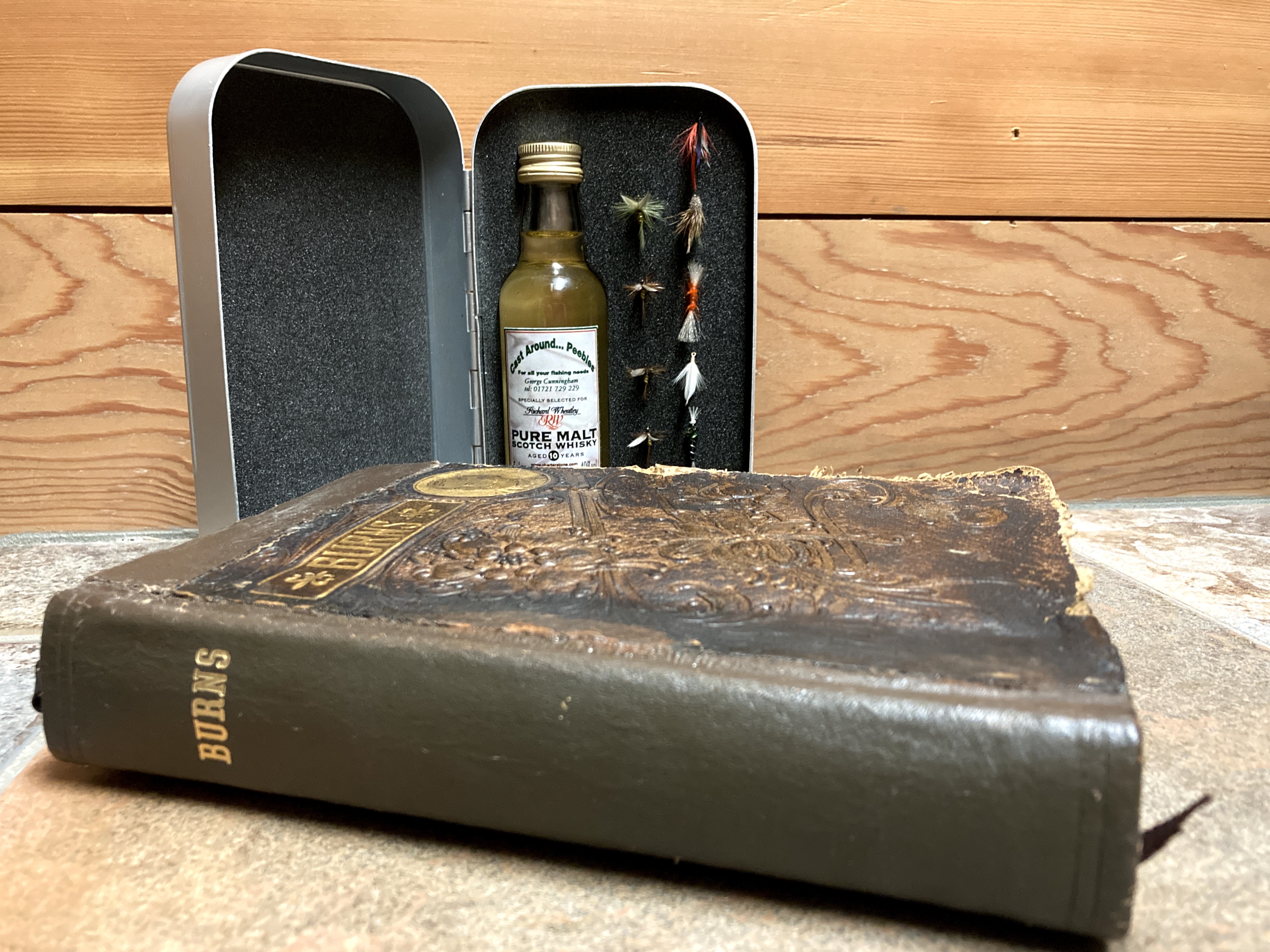
Halloween 2020 Repost: Ichabod Crane and the Angler
October 31, 2020At this time of year, Washington Irving’s well-known “The Legend of Sleepy Hollow” is often brought to mind. This, of course, is the classic tale of schoolmaster Ichabod Crane, his romantic rivalry with Brom Bones to gain the affections of Katrina Van Tassel, and his terrifying encounter with the Headless Horseman. It was originally part of a much larger collection of works by Irving, titled The Sketchbook of Geoffrey Crayon, Gent., published in 1819 and 1820. “The Legend of Sleepy Hollow” has subsequently been published many times as a solitary work.
The person who actually reads “The Legend of Sleepy Hollow” in the Sketchbook, will find that it is preceded by a reminiscence entitled “The Angler.” Here, Irving shows a very clear familiarity with fly fishing and angling literature. He first describes his initiatory fly fishing trip “along a mountain brook among the Highlands of the Hudson.” He admits to fishing poorly at the time and finding more pleasure in setting aside the rod and reading “old Izaak” Walton’s The Compleat Angler. Later, he also mentions reading the famous “Tretyse of fishing with an Angle” (Irving’s spelling), as well.
Irving goes on to narrate his later encounter with an old, retired mariner and expert fly fisherman in England. He writes:
I could not but remark the gallant manner in which he stumped from one part of the brook to another, waving his rod in the air to keep the line from dragging on the ground or catching among the bushes, and the adroitness with which he would throw his fly to any particular place, sometimes skimming it lightly along a little rapid, sometimes casting it into one of those dark holes made by a twisted root or overhanging bank in which large trout are apt to lurk.
In the text, Irving accompanies the old seaman home to learn more about fishing and to simply hear about the man’s fascinating life. He notes that “the old angler” kept a book on fishing, the Bible, an “odd volume or two of voyages, a nautical almanac,” and a song book as his library. Irving is explicit in showing his respect for the old man and states that his interest in fly fishing in theory, if not in practice, is renewed. Like Walton before him, he romanticizes all fisherpersons–particularly those in England–as individuals who understand the less-cultivated world of “nature” and who benefit spiritually and otherwise from such understanding:
The sweetness and serenity of Nature and the quiet watchfulness of the sport gradually bring on pleasant fits of musing, which are now and then agreeable interrupted by the song of a bird, the distant whistle of the peasant, or perhaps the vagary of some fish leaping out of the still water and skimming transiently about its glassy surface.
It is worth noting that Irving admits nature is a bit more tame in early nineteenth century England than it is in America. Indeed, his description of the Hudson Highlands is markedly less positive than his description of the English countryside.
Regardless, it is a curious thing that Irving’s recollection of “The Angler” is followed by his tale of the very nervous Ichabod Crane, who is is greatly afraid of so many things rightly and wrongly associated with nature. In Irving’s world, it is likely that Crane would have met a more certain and happy end, if he had been a fisherman, at peace in the woods during his ride home from unsuccessfully wooing Ms. Van Tassel. In fact, in Irving’s world, a more peaceful Crane might have been more successful in his wooing, in the first place (and perhaps it was the demeanor supposedly achieved through fly fishing that made Irving the rumored object of affection to the likes of the widowed Mary W Shelley and others).
Growing interest in classic fly fishing, according to WSJ
October 6, 2020I thought some of you may be interested in a Wall Street Journal Magazine article published today, Oct. 6, entitled “The Fly-Fishing Boom is Finally Here” (click the title to read). The piece is authored by Darrell Hartman. The subheading of the article is “A new generation of fly-fishing fans is turning toward the soulful history of the sport with sought-after vintage gear.” In reality, the article addresses more than gear, though many of us do tend to obsess over stuff.
Here is a quote from the article, addressing the growing popularity of fly-fishing, in general:
The sport is on the rise. In fact, it hasn’t been this ascendant in decades, industry experts say—not since the early ’90s, to be precise, when images of a young Brad Pitt casting for Montana trout in A River Runs Through It sent droves of neophytes to their nearest Orvis dealer.
Readers will recognize many venerable names in the article, both of fly fisher figures as well as tackle. Before reading, though, keep in mind that high-end gear, trips to exotic locations, and collectible books are not necessary to the enjoyment of this sport. Indeed, I suggest that our fascination with such things really represents a desire for a time when streams were less crowded, watersheds were less polluted, quiet time (away from electronic devices) was easier to find, and so on. So, enjoy the nostalgia, but remember that it cannot replace our need to protect nature and its denizens, including trout. Also remember that consumerism will do little to help our conservation efforts.
Thanks to Munsey Whebe, a humble maker of fine bamboo fly rods, and a guy who understand what’s important, for pointing out the article.
Fire and Fly
September 14, 2020Distance
March 25, 2020I think most of us tend to enjoy some quiet, which is most easily found away from our human peers. Even Dame Juliana Berners, or whoever actually wrote the 15th century classic The Treatyse of Fysshynge wyth an Angle, emphasized that solitude or “social distance” is an ideal part of fishing. This is the case, at least, for those of us who fish for meaning as well as game. She writes:
For when you intend to go to your amusements in fishing, you will not want very many persons with you, who might inder youu in your pastime. And then you can serve God deveoutly by earnestly saying your customary prayers. And in so doing, you will eschew and avoid many vices, such as idleness, which is the pricipal cuase of inciting a man to many otehr vices, as it right well known. (Modernization of text by Sherman Kuhn, and published in John McDonold’s The Origins of Angling, 1957).
I hope that each of you are able to enjoy some time outdoors–away from your germ-carrying fellow humans–during these challenging days. If not, perhaps consider rereading The Treatyse or some other classic angling texts. Soon, I will post an updated recommended reading list, in hopes that it may be of help in this pursuit. As always, I welcome suggestions from readers.
Meanwhile, I leave you with this helpful guide to social distancing, from the Montana Fish, Wildlife, and Parks Department.

